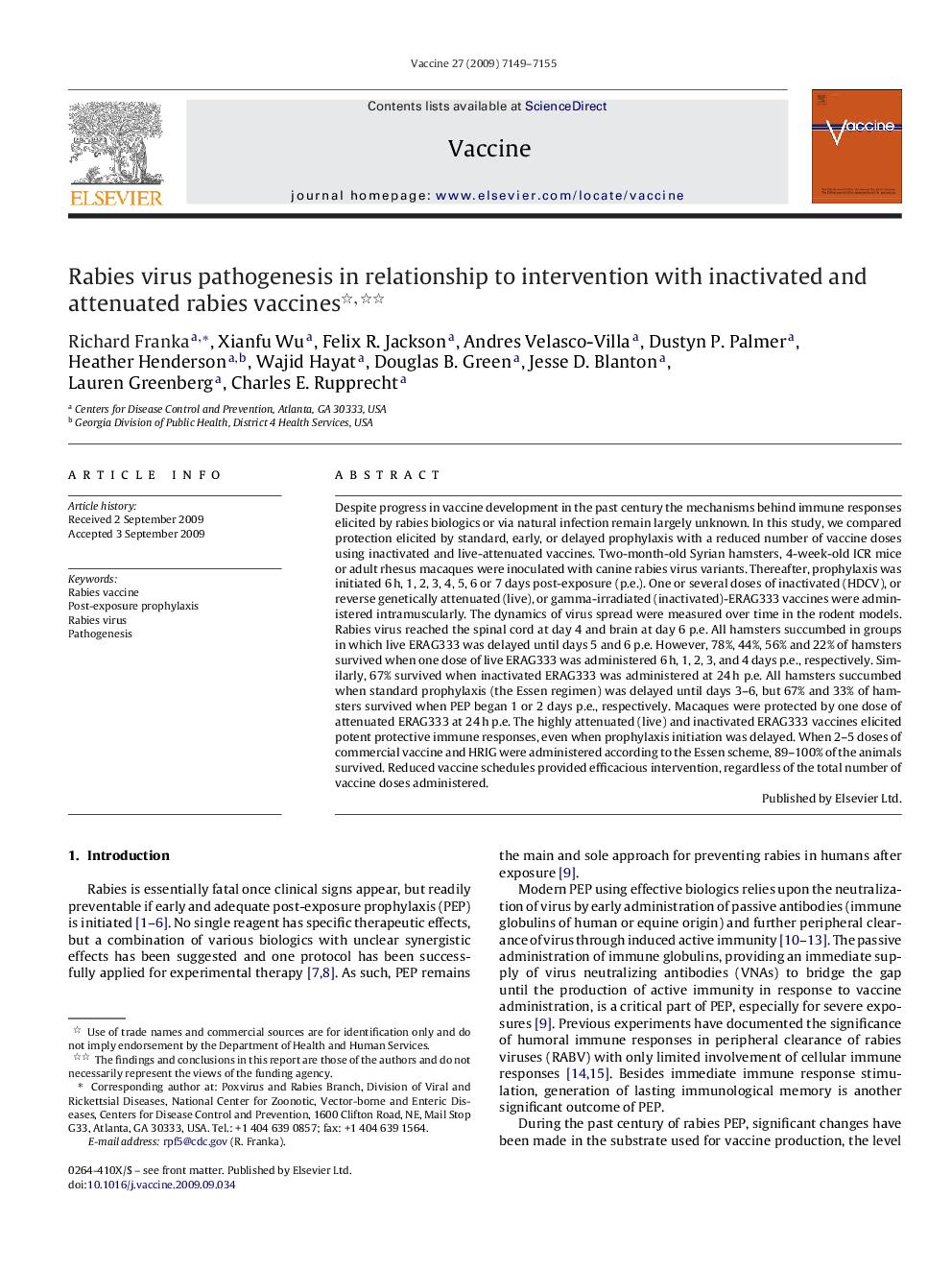| کد مقاله | کد نشریه | سال انتشار | مقاله انگلیسی | نسخه تمام متن |
|---|---|---|---|---|
| 10969648 | 1102976 | 2009 | 7 صفحه PDF | دانلود رایگان |
عنوان انگلیسی مقاله ISI
Rabies virus pathogenesis in relationship to intervention with inactivated and attenuated rabies vaccines
دانلود مقاله + سفارش ترجمه
دانلود مقاله ISI انگلیسی
رایگان برای ایرانیان
کلمات کلیدی
موضوعات مرتبط
علوم زیستی و بیوفناوری
ایمنی شناسی و میکروب شناسی
ایمونولوژی
پیش نمایش صفحه اول مقاله

چکیده انگلیسی
Despite progress in vaccine development in the past century the mechanisms behind immune responses elicited by rabies biologics or via natural infection remain largely unknown. In this study, we compared protection elicited by standard, early, or delayed prophylaxis with a reduced number of vaccine doses using inactivated and live-attenuated vaccines. Two-month-old Syrian hamsters, 4-week-old ICR mice or adult rhesus macaques were inoculated with canine rabies virus variants. Thereafter, prophylaxis was initiated 6Â h, 1, 2, 3, 4, 5, 6 or 7 days post-exposure (p.e.). One or several doses of inactivated (HDCV), or reverse genetically attenuated (live), or gamma-irradiated (inactivated)-ERAG333 vaccines were administered intramuscularly. The dynamics of virus spread were measured over time in the rodent models. Rabies virus reached the spinal cord at day 4 and brain at day 6 p.e. All hamsters succumbed in groups in which live ERAG333 was delayed until days 5 and 6 p.e. However, 78%, 44%, 56% and 22% of hamsters survived when one dose of live ERAG333 was administered 6Â h, 1, 2, 3, and 4 days p.e., respectively. Similarly, 67% survived when inactivated ERAG333 was administered at 24Â h p.e. All hamsters succumbed when standard prophylaxis (the Essen regimen) was delayed until days 3-6, but 67% and 33% of hamsters survived when PEP began 1 or 2 days p.e., respectively. Macaques were protected by one dose of attenuated ERAG333 at 24Â h p.e. The highly attenuated (live) and inactivated ERAG333 vaccines elicited potent protective immune responses, even when prophylaxis initiation was delayed. When 2-5 doses of commercial vaccine and HRIG were administered according to the Essen scheme, 89-100% of the animals survived. Reduced vaccine schedules provided efficacious intervention, regardless of the total number of vaccine doses administered.
ناشر
Database: Elsevier - ScienceDirect (ساینس دایرکت)
Journal: Vaccine - Volume 27, Issue 51, 27 November 2009, Pages 7149-7155
Journal: Vaccine - Volume 27, Issue 51, 27 November 2009, Pages 7149-7155
نویسندگان
Richard Franka, Xianfu Wu, Felix R. Jackson, Andres Velasco-Villa, Dustyn P. Palmer, Heather Henderson, Wajid Hayat, Douglas B. Green, Jesse D. Blanton, Lauren Greenberg, Charles E. Rupprecht,